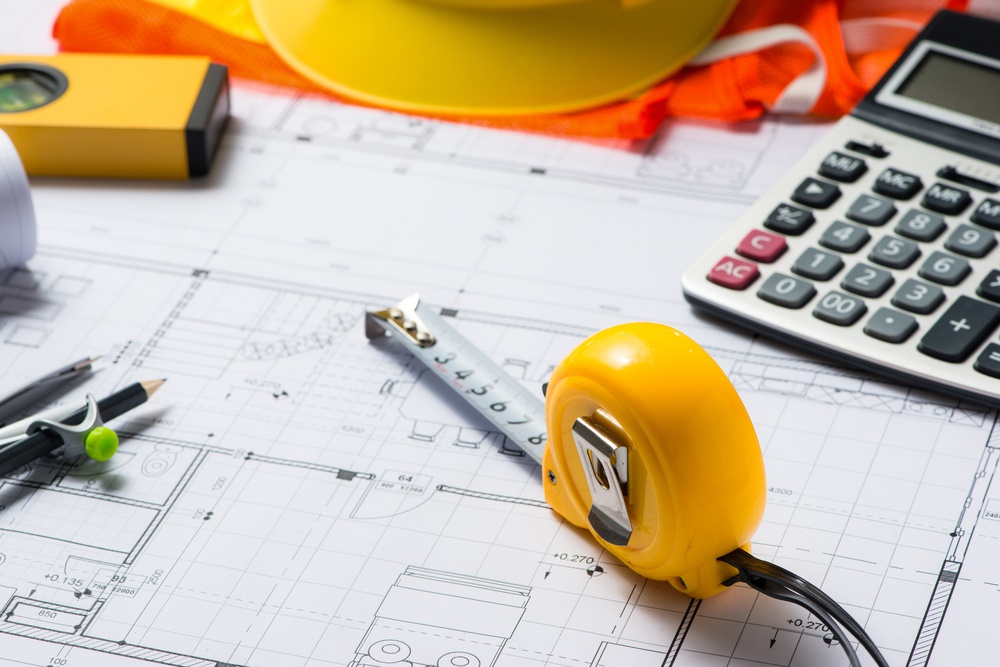How to Tackle Cost Estimation in Construction: 8 Key Steps

Introduction
Cost estimation in construction is a critical process that underpins the success of any project. Accurate estimates not only contribute to proper budgeting but also help in resource allocation, risk mitigation, and client satisfaction. Whether you're an architect, general contractor, or developer, mastering construction cost estimation will empower you to deliver projects on time and within budget.
This blog outlines the importance of accurate estimating, key steps to follow, challenges faced, and modern solutions that can help elevate your construction cost estimation practices.
Why Accurate Estimating Matters
The stakes are high in construction. Overlooking any factor in your estimates can lead to cost overruns, strained relationships with stakeholders, and even project delays. Accurate cost estimation ensures you:
- Create Realistic Budgets – No surprises or unplanned expenses.
- Optimize Resource Management – Plan labor and materials more efficiently.
- Avoid Financial Risks – Anticipate potential obstacles and cushion the impact.
By following a methodical approach, construction teams can mitigate risks and increase the probability of project success. Here's how to get started.
8 Key Steps to Construction Estimation
1. Examine Bid Documents Thoroughly
The first step is to study all provided documentation carefully, including scope descriptions, designs, and specifications. Assess project requirements and constraints to avoid oversight.
2. Visit the Construction Site
Every construction site is unique. Conduct a site visit to identify physical constraints, terrain conditions, or legal requirements that might impact costs.
3. Conduct a Detailed Material Quantity Takeoff
Break the project down into components and calculate the precise quantities of materials needed. This is the foundation of an accurate estimate. Digital tools such as Bluebeam or PlanSwift can streamline this task.
4. Gather Pricing from Suppliers and Vendors
Contact trusted suppliers and vendors for up-to-date pricing on materials. Building strong relationships with suppliers can lead to better deals and more reliable cost estimates.
Looking for a high-performance MEP design for your building and an accurate construction cost estimation?
5. Assess Labor Needs and Associated Costs
Labor costs vary depending on the project size, location, and required expertise. Estimate the number of man-hours and factor in prevailing wages and benefits.
6. Include Insurance and Bonding Costs
Don’t forget insurance, bonding, and permits in your cost breakdown. These factors can add up substantially and should not be neglected.
7. Factor in Overhead and Indirect Expenditures
Include costs like equipment rentals, office overhead, storage, and logistics. These are essential to cover the full scope of the project.
8. Account for Profit Margins and Contingencies
After determining the direct costs, add a reasonable profit margin and contingency allowance. A 10% to 20% buffer is typically recommended for unexpected scenarios.
Main Challenges in Construction Cost Estimation and Solutions
Despite following a systematic plan, estimating can be hindered by specific challenges. Here’s how you can address them effectively.
Material Price Volatility
- Challenge: Material prices, especially for commodities like steel and lumber, fluctuate frequently.
- Solution: Include price escalation clauses in contracts and work with reliable suppliers for consistency.
Resource Consumption Complexity
- Challenge: Estimating key resources such as man-hours, machinery, and utilities becomes complicated for large-scale projects.
- Solution: Adopt resource management tools that track input usage comprehensively to refine budgets.
Tight Timelines
- Challenge: Large projects need estimators to calculate costs quickly, leading to pressure to meet deadlines with precision.
- Solution: Leverage estimating software that automates material takeoffs and speeds up calculations.
Reliance on Traditional Methods
- Challenge: Manual estimation processes are prone to error and can be time-consuming.
- Solution: Use digital estimation tools like ProEst or Buildertrend to improve efficiency and accuracy.
Competitive Bidding Deadlines
- Challenge: Submission deadlines in competitive bids often leave little room to refine estimates.
- Solution: Invest in software that enables quick adjustments to last-minute changes, ensuring both speed and accuracy.
Types of Estimates for Construction
Understanding the different types of cost estimates will further enhance your project planning
- Preliminary Estimate – Early stage, high-level estimate based on limited data.
- Detailed Estimate – Comprehensive and precise, considering all cost factors.
- Ballpark Estimate – Rough figure derived from historical data.
- Parametric Estimate – Uses specific project parameters to calculate predictive costs.
- Quantity Takeoff Estimate – Detailed measurement-based value of resource needs.
- Order of Magnitude Estimate – Broad estimate with wide accuracy range, helpful in feasibility analysis.
Transforming an Estimate into a Bid Proposal
Accurate estimates lay the groundwork for competitive bid proposals. Ensure your proposal includes a clear outline of the scope of work, cost breakdown, timelines, and any assumptions or exclusions. This builds trust with stakeholders and improves your chances of winning the bid.
Using Technology for Data-Driven Sustainable Growth
The role of technology in construction estimating cannot be overlooked. Modern estimating software leverages big data and AI to provide predictive insights, helping teams enhance accuracy and efficiency. NY Engineers incorporates advanced estimating techniques to ensure projects stay on track WITHOUT breaking the bank.
Conclusion
When it comes to seamless cost estimation in construction, NY Engineers is an industry leader.
- Expertise in quantity takeoffs, resource tracking, and custom estimation needs.
- Adoption of cutting-edge technology for rapid and reliable estimating.
- A commitment to accurately predicting costs, helping clients reduce overruns and stay within budget.
For more information or a custom quote, contact us at Info@ny-engineers.com or call (786) 788-0295.
FAQs
Cost estimation in construction is the process of forecasting the expenses required for a project, including materials, labor, equipment, and overhead. It is crucial for budgeting, resource allocation, and ensuring financial feasibility while minimizing cost overruns.
The key elements of cost estimation in construction projects include:
- Material Costs – Expenses for raw materials like concrete, steel, and wood.
- Labor Costs – Wages for workers, including contractors and subcontractors.
- Equipment Costs – Rental or purchase of machinery and tools.
- Overhead Costs – Administrative, insurance, and permit expenses.
- Contingency Costs – Extra funds for unexpected expenses or risks.
- Project Duration – Time-related costs, including inflation and delays.
Construction companies can ensure accurate and reliable cost estimates by:
- Using Historical Data – Analyzing past project costs for better predictions.
- Leveraging Estimating Software – Utilizing tools like CostX or RSMeans for precision.
- Conducting Detailed Site Analysis – Assessing site conditions and potential challenges.
- Breaking Down Costs – Separating material, labor, equipment, and overhead expenses.
- Including Contingency Funds – Accounting for unforeseen costs and risks.
- Regularly Updating Estimates – Adjusting for market fluctuations and project changes.
- Consulting Experts – Collaborating with engineers, contractors, and suppliers for insights.
The risks associated with inaccurate cost estimates in construction projects include:
- Cost overruns and budget shortfalls
- Delays and project delays
- Decreased profitability
- Damaged reputation and reduced trust from clients

Anuj Srivastava
Anuj Srivastava is a principal partner at NY Engineers. He is known for his MEP franchise market knowledge. Anuj is currently leading a team of 100+ MEP/FP engineers and has successfully led over 1500 franchise projects in the US.
Join 15,000+ Fellow Architects and Contractors
Get expert engineering tips straight to your inbox. Subscribe to the NY Engineers Blog below.


